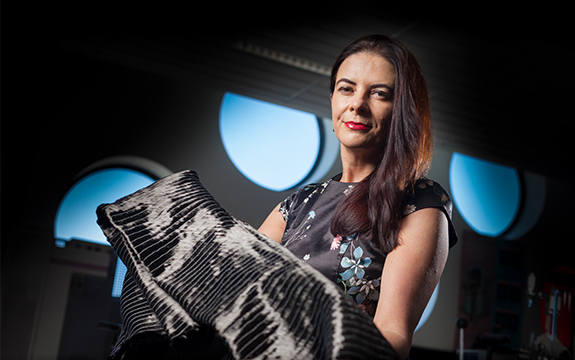Why the hype about graphene?

In Summary
- Graphene is the lightest, strongest and most electrically conductive substance on Earth
- It has many uses in building materials, military equipment and smart technology
- Professor Alan Duffy speaks with Victoria's Lead Scientist Dr Amanda Caples about the future of graphene and why it’s a key part of Industry 4.0
Graphene is one of the most innovative materials to be developed and utilised this century.
Researchers at Swinburne have been heavily involved in its development, innovation and commercialisation.
What is graphene?
Graphene is both the lightest and strongest material known to man. It is a single layer of carbon atoms arranged in a honeycomb-like structure and is the most electrically conductive substance on Earth.
It was discovered in 2004 by an unusual technique. Researchers from the University of Manchester in the UK used sticky tape to peel flakes from a lump of graphite, separating the layers until they were just one atom thick.
Graphene has proven highly versatile and has been used for building materials, military equipment, solar cells and smart devices.
Swinburne’s graphene ‘hub’
As part of the Graphene Supply Chain Cooperative Research Centre Projects (CRC-P), Swinburne is working with industry partner Imagine Intelligent Materials to develop graphene to meet strict quality assurances and to be used in large-scale manufacturing. It is also working to establish industry partnerships.
The material is also a key focus of the Next Generation Materials program, led by Professor Baohua Jia at Swinburne’s Manufacturing Future Research Institute (MFRI).
Deputy Vice-Chancellor (Research and Enterprise), Professor Bronwyn Fox, says Swinburne researchers are working to establish standard knowledge and procedures for investors and suppliers of graphene.
“In the supply chain certification lab, we are developing the research to understand the relationship between the structure and performance of graphene so that industry can have security of supply, ensure successful applications and strengthen future investments in the technologies that utilise this material.”
Swinburne researchers have analysed the complete graphene supply chain – from production to industry practice. They have investigated graphene’s properties and tested its ability to combine with other materials in engineering developments, as well its potential to be used as a thin, protective coating.
A graphene-enabled future
Astronomer and Lead Scientist of the Royal Institution of Australia, Professor Alan Duffy recently spoke with Victoria's Lead Scientist, Dr Amanda Caples about the future of graphene, its many uses and why it's a key part of Industry 4.0.


